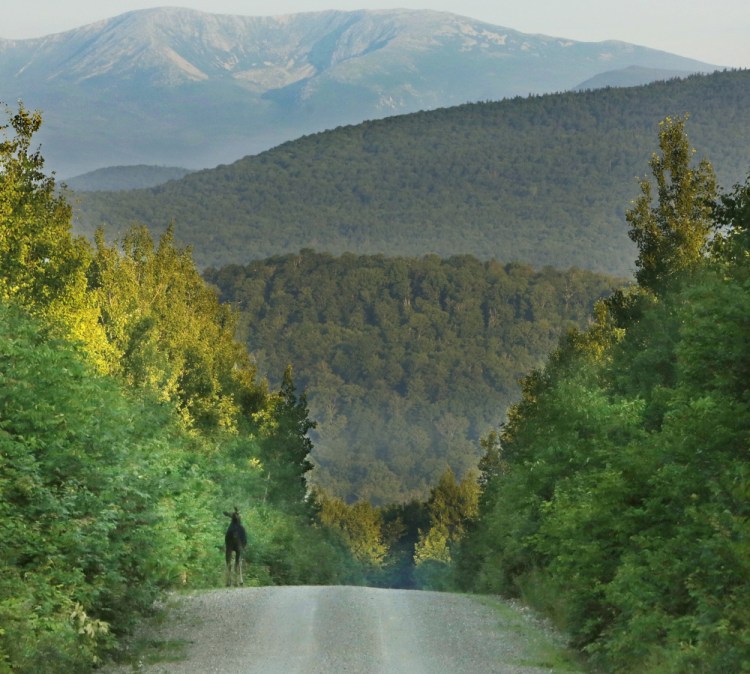Want to see Atlantic puffins? There is only one place to go in the United States: Maine.
How about a moose? Vacationland gives you a better chance than any other state.
Maybe looking to hook a wild brook trout – that famous game fish that has been here since the last ice age – look no further.
In fact, several species are the reason Maine is at the top of the list for wildlife watching in the country.
Tourism in Maine attracts 38 million visitors a year and in 2016 had an overall economic impact of more than $8.8 billion, according to the Maine Office of Tourism.
Moreover, of 1,407 tourists queried by the state in 2016, almost a third (or 28 percent) said they preferred wildlife watching to all other touring activities, such as enjoying ocean views or fall foliage or sightseeing.
And we ask: Why not? Maine is home to some of the largest populations of iconic wildlife species in the Northeast and, in some cases, the country.
MOOSE
In September 2016, the Friends of Goose Rocks Beach posted a video on its Facebook page of a big bull moose running along the incoming tide on the Kennebunkport beach.
OK, so moose are not so prolific in Maine to be found wandering the York County coast on a regular basis. But they do roam in greater densities in Maine than in any other state, including Alaska, said Maine moose biologist Lee Kantar.
 There are between 50,000 and 70,000 moose in Maine, Kantar said. That’s not as high as the moose population across the vast wilderness of Alaska, he added, but it beats every other state in the Lower 48.
There are between 50,000 and 70,000 moose in Maine, Kantar said. That’s not as high as the moose population across the vast wilderness of Alaska, he added, but it beats every other state in the Lower 48.
Alaska has an estimated 175,000 moose, according to the Alaska Department of Fish and Game.
But the Minnesota Department of Natural Resources – another big moose state – estimates there are about 3,450 moose there. New Hampshire and Vermont both have a few thousand, Kantar said.
And moose roam here in greater densities – as many as five per square mile in the northern forestland, Kantar said.
“I think for the most part across Alaska, except for maybe Fairbanks, we have areas in the state with greater densities,” Kantar said.
What helps moose thrive in Maine is the lack of wolves, Kantar said. Other regions of North America lacking wolves also have high moose densities, such as Cape Breton in Canada and Newfoundland.
PUFFINS
When Steve Kress of the National Audubon Society founded the Puffin Project in Maine in 1973, Atlantic puffins were all but extirpated here. The numbers had been depleted by hunting in the late 1800s, Kress said, and by 1901 there was just one pair.
Today there are more than 1,300 nesting pairs. And there are many more tourists who come to see them.

In fact, Maine is the only place in the United States where you can see an Atlantic puffin because here they are at the southern end of their range, Kress said. In North America the only place to see more Atlantic puffins is Newfoundland, which Kress said is the sweet spot for puffins, with as many as 100,000.
In Maine since the recovery effort, puffin watching has become quite common, he said.
“There are boats going out of Boothbay Harbor, New Harbor and Port Clyde, sometimes a few a day,” Kress said.
LOONS
Maine is not the epicenter for loons in North America. That would be Canada, where somewhere near 1 million nest.
But it does boast the most nesting loons in the Northeast by a long shot, said Maine Audubon biologist Susan Gallow, who leads the state’s 34-year-old loon survey. Maine had just over 3,000 nesting pairs at last count, Gallo said. That’s up from 1,400 in the early 1980s.

“You could argue our estimate might be a little high or a little low, but whether the actual number is higher, we have twice as many,” Gallo said.
By comparison, Vermont has just over 90 pairs and New Hampshire has just under 300; while New York has around 1,000 pairs, Gallo said.
At last count Minnesota had around 10,000 individual birds, Gallo said. So Maine is not at the top of the U.S. in loon numbers, but it is one of the top five states, and it does reign in the Northeast.
“New Hampshire gets their loons from us (when the birds migrate there). So does Massachusetts,” Gallo said.
BROOK TROUT
The Eastern Brook Trout Joint Venture, a partnership between state and federal agencies, and conservation organizations, calls Maine the last true stronghold for wild brook trout in the eastern United States. It’s almost an understatement.
 According to the Joint Venture’s 2006 study Maine had twice the number of intact sub-watersheds for wild brook trout populations than all the other 16 states in the species’ range combined.
According to the Joint Venture’s 2006 study Maine had twice the number of intact sub-watersheds for wild brook trout populations than all the other 16 states in the species’ range combined.
In Maine there are 578 lakes or ponds with wild brook trout populations that have never been stocked or not stocked in 25 years. That amounts to 97 percent of the remaining wild brook trout lakes and ponds in the species’ native range. By comparison, New Hampshire has three wild trout ponds, said Jeff Reardon, the New England director of Trout Unlimited. And Vermont has at least one wild brook trout pond, while New York has around 20, he said.
“It is an exceptionally rare resource elsewhere, and yet it’s quite common in Maine,” he said.
Send questions/comments to the editors.




Comments are no longer available on this story